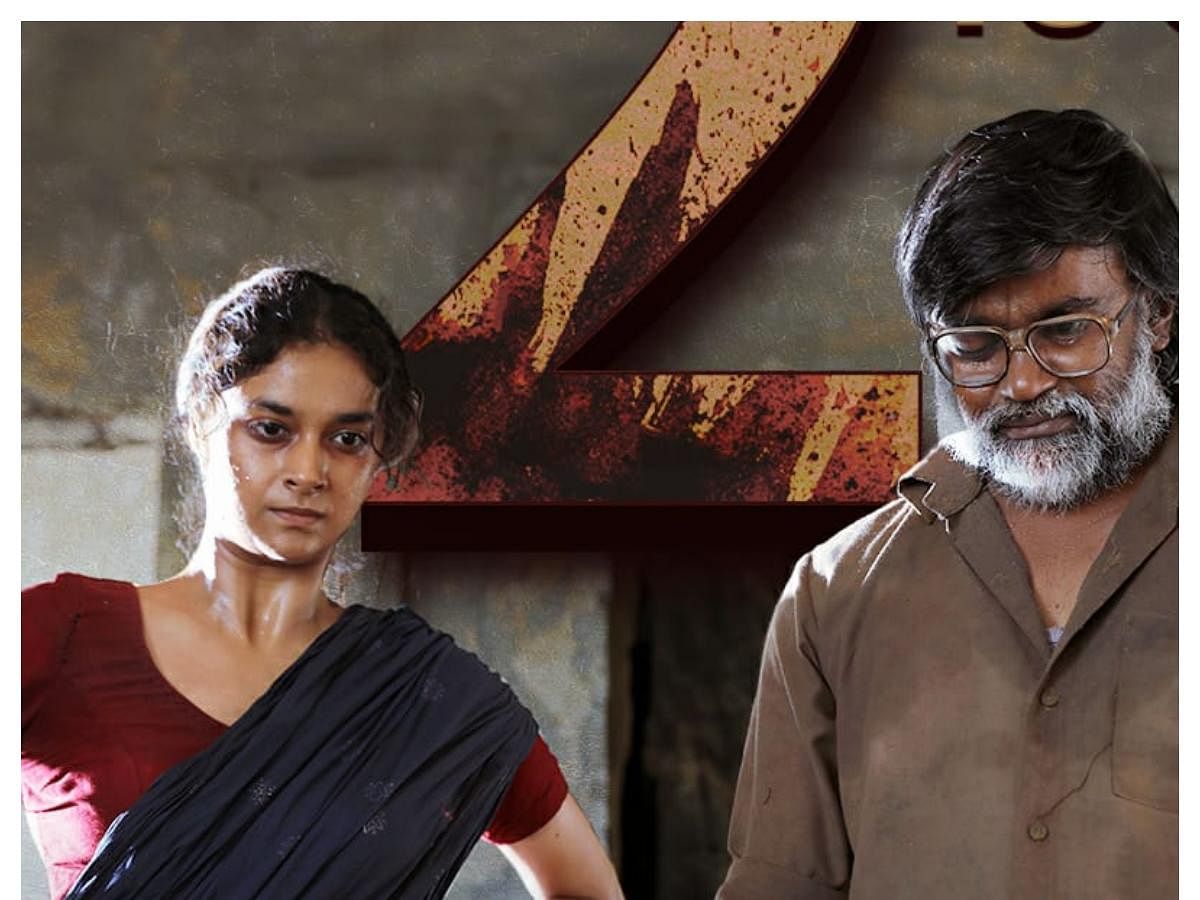
Ponni, a policewoman from a poor background, is raped and her husband and daughter are killed by the men of upper castes including a paper mill owner and his henchmen, in a coastal village. How she takes revenge forms the story of ‘Saani Kaayidham’ (Pulp paper). The movie is worth watching, for it offers an experience that one wouldn’t get by reading any amount of reviews.
In this world of slow-burn crime drama, one can see a man lying on the floor with his spectacles away from him, literally telling the viewer that great pain endured can just blur one's perspective, and probably change it. The plains on the coast and the sandhills, and the unending vast sky proportioned on-screen much greater than the landmass, shown in black-and-white, give an eerie, uneasy feeling.
The abandoned buildings, broken windows, narrow lanes, various types of knives and machetes, and unbridled violence by everyone — unwittingly remind the viewer of Arun Matheswaran's directorial debut, ‘Rocky’, which is set almost in the same world, with the same cinematic quality.
Keerthy Suresh is at her best as Ponni and it doesn’t matter if she gets an award for this movie or not. She embodies the soul wounded and battered beyond recognition, having lost everything in life, and goes all out with not a drop of regret anywhere in the movie, except for when she loses her step-brother. In some scenes, she seems borderline schizophrenic — understandably so.
Sample this: All we saw was a burning hut and we know Ponni's husband and daughter were inside. One can only imagine what happened inside during the fire. However, when Ponni describes it to her step-brother, you can feel your own blood boiling, looking at her expressions and the way she talks about it. In a courtroom scene, she is sitting outside and slowly her angst builds up looking at her tormentors. Veteran filmmaker Selvaraghavan is fantastic in his role too.
Keerthy as an actor and Yamini Yagnamurthy as cinematographer, shows you what it is to be a woman in extremely brutal conditions. We see only Ponni's face in the scenes of her rape, and the faces of the men who attack her. Yet, we can imagine everything she goes through. Similarly, we see only her face and expressions even when she acts in vengeance against the rapists. It's all about Ponni, and her revenge. Can this be considered a classic case of offering a new angle, with the "female gaze" in cinema?
Then they both also dislodge every imagination of what a woman is capable of, in the movie that shows violence in all its gore, without actually showing the real action in most of the scenes, even when she pulps her rapists. The same is true for other violent scenes — the camera focuses on the one who is unleashing violence, and not on the victim. One gets to feel the cruelty and emotions of the violent.
The editing is such that the illusion created makes it look like gore, but we don't see the actual act of violence. (It reminds of you of bathroom murder scene in Alfred Hitchcock's Psycho, or some scenes in ‘Garuda Gamana Vrishabha Vahana’, but here we see the decapitated bodies later) The soundtrack dissonances, through which old Tamil melodies and a film get associated with gruesome visuals, are fantastic.
The movie is divided into six parts and an epilogue (A thousand gazes), just to establish the innocence of the visually disabled boy and to make a poetic statement about the gazes of the blind and the unseeing men who had eyes. This probably didn't matter in the larger scheme of things, hence felt forced and unnecessary — because Ponni trusts his innocence anyway already.
Music by Sam C S is just apt. The movie has its own loopholes. The brother-sister bond that was never fully established in the movie from Ponni's side becomes apparent only in the last scene and hence feels very artificial. The scenes of acid pouring feel very unreal — the acid fumes, in real life, make everyone nearby cough and feel nauseated but not in this movie — Ponni does not even flinch her face. Anyway, guess this is just cinematic freedom the director took.
However, this movie is a masterclass in how to make a film dedicated to violence - it shows what violence can do to a human being and how it can brutalize one, and what that inner change is capable of achieving.